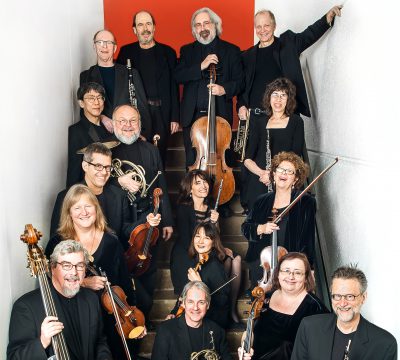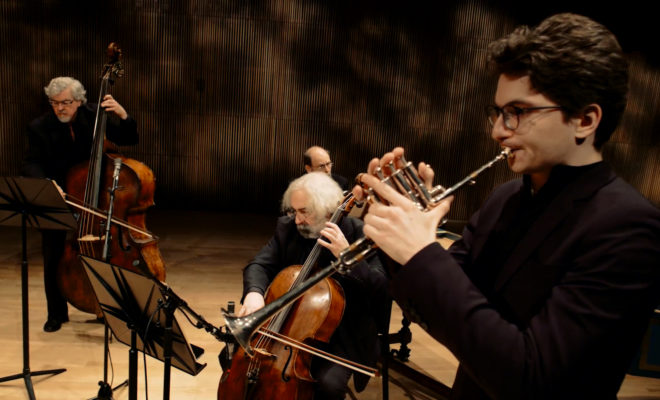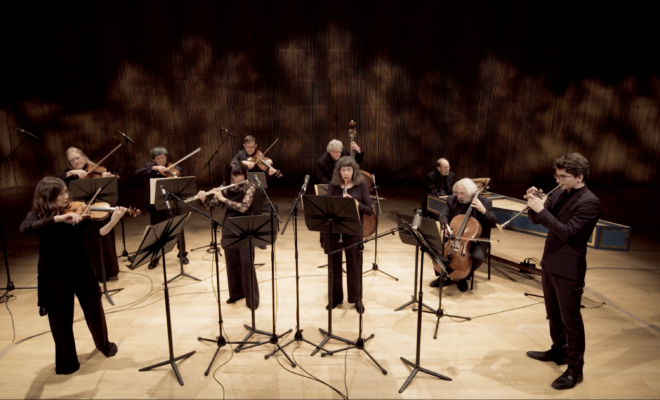The second “Brandenburg” Concerto has a most unusual solo ensemble in Bach’s presentation manuscript, consisting of trumpet, flute, oboe, and violin. We tend to think of the trumpet as a particularly loud instrument and the recorder as very soft, though the instruments of Bach’s day would have been better balanced in terms of volume, and in the modest-sized rooms in which this music was performed, the flute would project quite well. While it is possible that Bach composed for these four solo instruments simply because they were there, it is equally likely that he chose them precisely for their diversity. The fact that each sounds so different from the other makes it easier to keep track of their doings throughout the concerto.
The final movement brings back the brass instrument, which opens the proceedings with a fanfare melody that serves as the subject of a lively fugue. The four instruments enter in turn with the fugue subject (trumpet) and answer (oboe), subject (violin) and answer (flute).
© Steven Ledbetter
Program
Johann Sebastian Bach
Brandenburg Concerto No. 2, mvmt. III, BWV 1047


